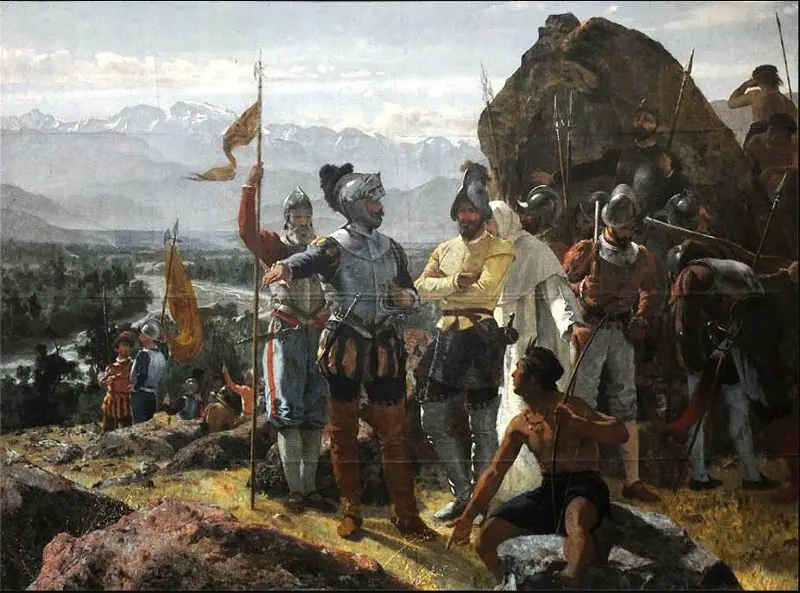 he discovery of the new world by Columbus in 1492 gave way to an era of Spanish dominance across Europe. Going from Louisiana to South Georgia, the Spanish overseas holdings in the Americas made the already rich empire even richer. With the powerful House of Habsburg on their throne, which also ruled the Holy Roman Empire, Spain now became the de facto leader of Europe.
he discovery of the new world by Columbus in 1492 gave way to an era of Spanish dominance across Europe. Going from Louisiana to South Georgia, the Spanish overseas holdings in the Americas made the already rich empire even richer. With the powerful House of Habsburg on their throne, which also ruled the Holy Roman Empire, Spain now became the de facto leader of Europe.
Spain nowadays can best be described as one of the sick men of the European Union. With a growth rate well below the average within the union, we must enquire. What led to the downfall of one of the biggest empires history has seen?
A literal Golden Age
Under Charles I and Philip II, Spain was at the height of its power. While they were in power, the treasury of Spain would grow to an unimaginable size. Gold from the New World, more specifically South America, came directly to the capital, making the empire one of the richest in Europe. Later into Philip’s reign, he would also inherit Portugal, which further increased the colonial extent of the Spanish Empire as well as its holdings in Europe.
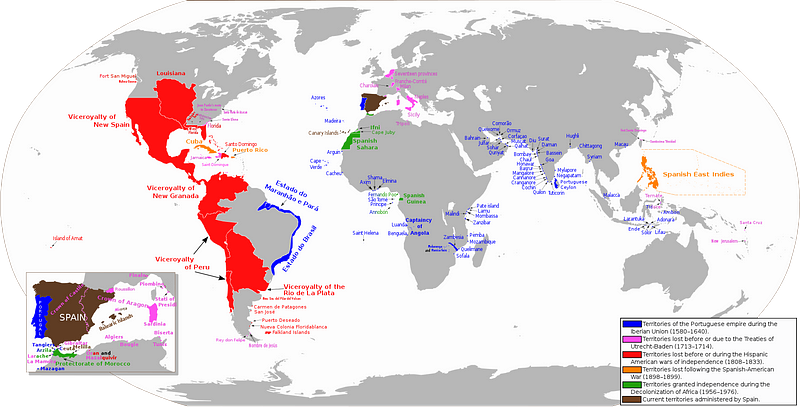
While Spain reached their golden age, so did the Ottoman Empire on the other side of Europe. This became a big problem as the king of Spain was traditionally awarded the title of the Catholic Monarch by the Pope. This meant that the monarch of Spain was responsible for protecting both Spain and Christianity within Europe. Two major problems came about because of this.
‘Some’ Opposition
The Ottoman expansion in the Balkans put a lot of pressure on the Spanish; by not pushing back the Muslim empire, Spain would lose prestige and legitimacy as there was an expectation for Spain to protect all Christians. Placating the most powerful Muslim power of the East was not going to be cheap. A Holy League was formed to fight back against the eastern aggressor and to ensure safety for the smaller nations of the Mediterranean.
A notable effort by the Holy League to placate the ever-expanding empire was at the Battle of Lepanto, where the Holy League’s Navy and the Ottoman Navy fought for control of the Mediterranean. Seeing the Ottoman Navy as the biggest threat to Christians in the Mediterranean, the decision was taken to annihilate it once and for all. Although the battle ended with a Holy League victory, the Spanish Armada and the other members navies were damaged heavily by the encounter. To rebuild, money had to come out of the Spanish treasury.
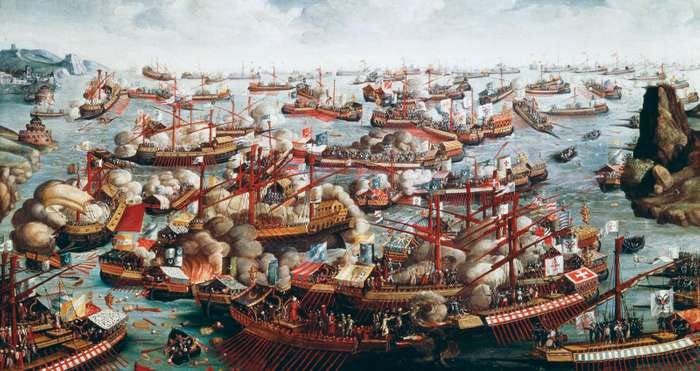
The protestant reformation also put the prestige of the Catholic Monarch in danger. The movement kickstarted the Religious Wars of Europe and, most notably, the Thirty Years’ War (1618–1648). A big problem Spain would face as a result of these wars would be unrest in their Northern European holdings. In the region of the Netherlands, at the time under Spanish control, the reformation had much influence, which increased the already evident split between the subjects and their overlord in the region.
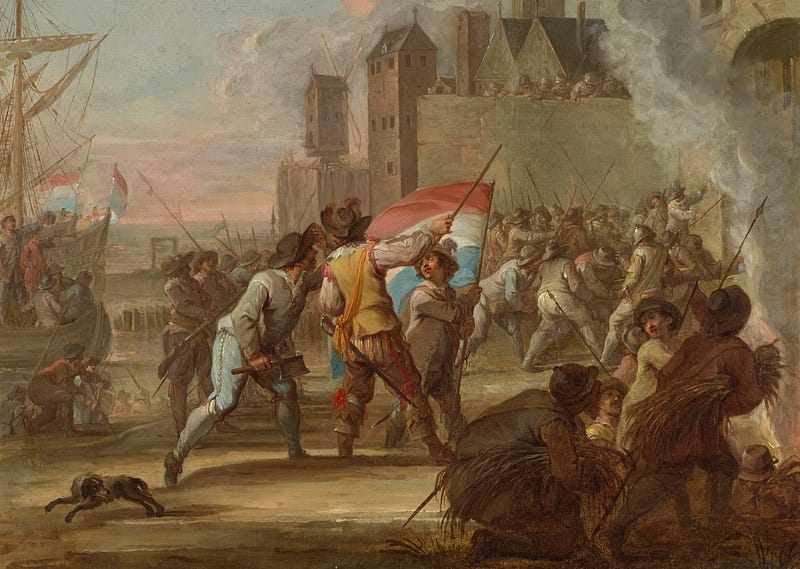
The unrest in the region was ever-present. For 80 years, the people of the region of the Netherlands campaigned for independence from the Spanish crown through revolts and uprisings. In the end, the empire decided it wasn’t worth it to keep the already unstable land under Spanish control and recognized the independence of the Netherlands in 1648.
With a new competitor in both trade and colonization, it started to look like the empire’s Golden Age might be over. But the bad news did not stop there.
The French problem
Not long after Dutch independence, Louis XIV saw the opportunity to put France at the forefront of European politics. By destroying Spain, the French king would gain the title of Europe’s leading monarch, and with Spain weak, this was the time to strike.
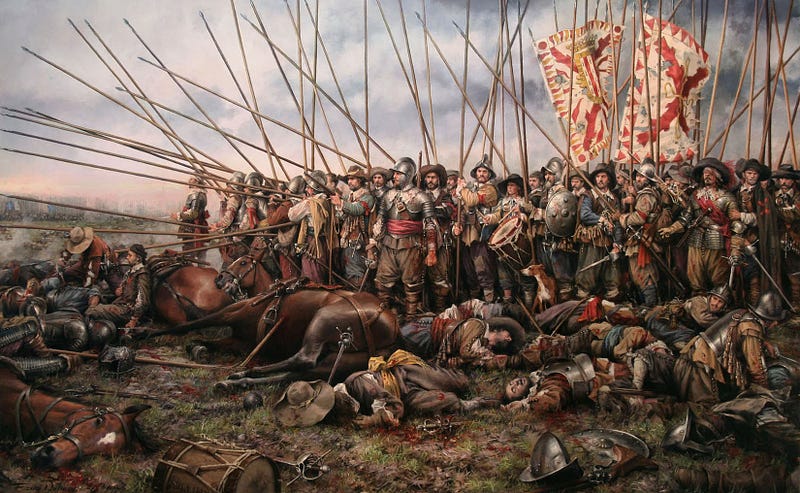
As an extension to the 30 Years’ War, the Franco-Spanish War (1635–1659), would conclude with the Battle of the Dunes (1658) where the Spanish side would get decimated by their French counterpart. The following Treaty of the Pyrenees made sure that France would be entrenched as the head of Europe, with Spain falling behind to second place.
The treaty had very severe territorial consequences for Spain, with them losing Spanish Flanders and a large part of North Catalonia to France.
Many see the Treaty of the Pyrenees as the end of the Spanish Golden Age, but of course, other factors contributed to the end of the Golden Age. An honorable mention should go out to the instability within the Iberian Peninsula and the unrest this caused. This would reach a boiling point under Charles II.
The Habsburg problem
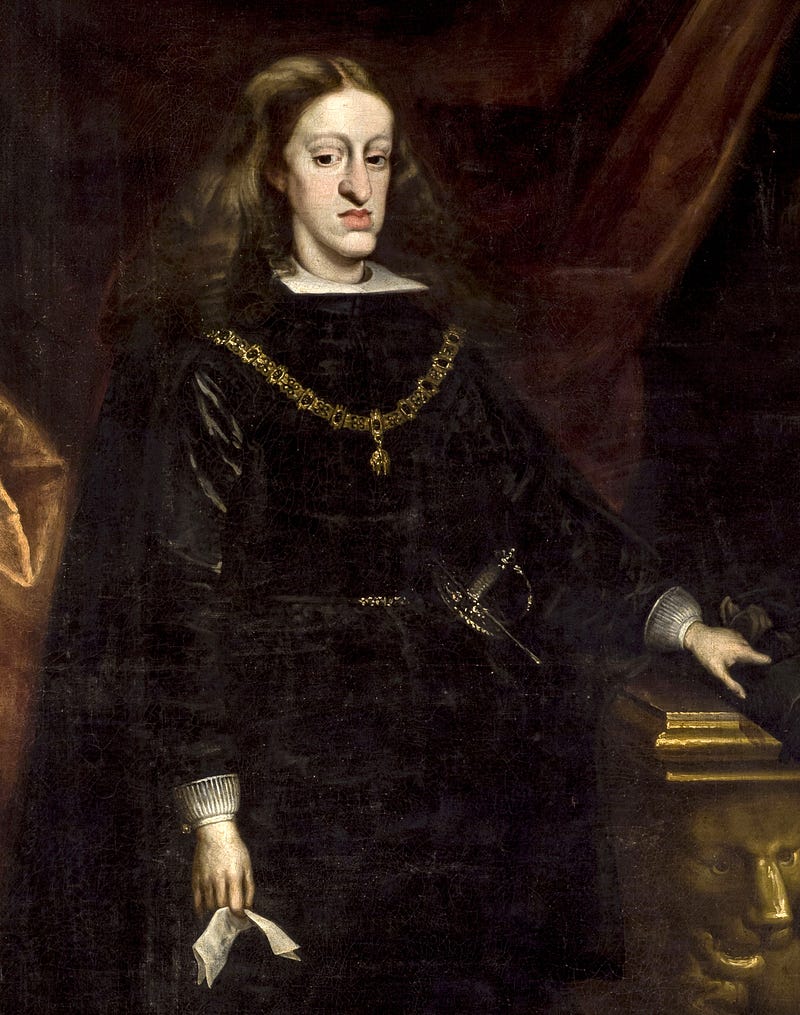
After Philip IV’s death on 17 September, 1665, his son Charles II a.k.a. Charles the Bewitched, inherited the Spanish throne at the age of 3. Being a child of the Habsburg dynasty, Charles was a product of a long line of incest. This resulted in him being born infertile and with some deformities from which he would get his nickname “the Bewitched”.
From his birth until his death, Charles would exercise minimal power over his kingdom. Due to his disabilities, he would frequently be ill, which meant that the ruling class of Spain was left to rule the kingdom. As expected, this sparked conflict within the nobility due to no true figurehead being present to unite them.
The nail in the coffin for Spain would be the death of Charles II. As he was infertile, Charles left behind no child as a potential heir. Instead, he nominated Philip of Anjou, the grandson of Louis XIV. Young Philip now had claims to both the French and Spanish throne. Neither country would allow for such a union to form; therefore, war was declared, The War of the Spanish Succession (1701–1714).
The war would conclude with Philip taking the Spanish throne and denouncing his claims on the French throne with major territorial concessions being made. Once again, Spain lost even more of its holdings outside of Iberia. These include:
Spanish Netherlands, Naples, Milan and Sardinia to Austria
Sicily to Savoy
Gibraltar and Menorca to Britain
France gains the Principality of Orange and the Ubaye Valley
The end of this war also meant the end of the Habsburg reign on Iberia. Although still powerful, Spain would not look the same as it did after Columbus’ discovery of the New World. In essence, putting an end to Spanish dominance across Europe.
Rise and Fall
From world power to regional power, the journey of Spain through history is indicative of the nature of most empires. No empire can last forever, and the Spanish Empire is one of the base case studies of this.
Each period of history has its own world powers, going from the time of Roman domination across Europe to the current global climate where world powers such as the US, Russia, India, and China form a ‘ruling class’ of sorts that dictate geopolitics. There has always been a cycle. We must look at these world powers and beg the question, which of these will fall, and who will rise to replace them?

Student of Philosophy, Politics and Economics. History fanatic. Contact: aneculaeseicg@gmail.com

